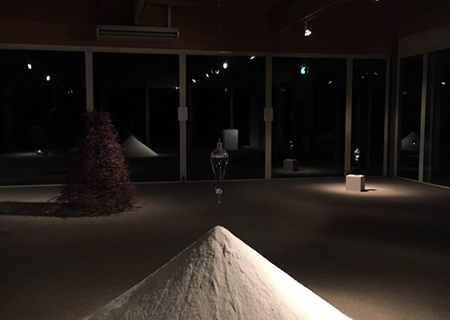
Spent – Dove Bradshaw
November 6 – December 31, 2016

November 6 – December 31, 2016

October 8 – 16 2016
Fifty Percent Human creates an in-between space, addressing uncertainties, ambiguities and imagination linked to the microbial paradigm shift both on an aesthetic and on an epistemological level.
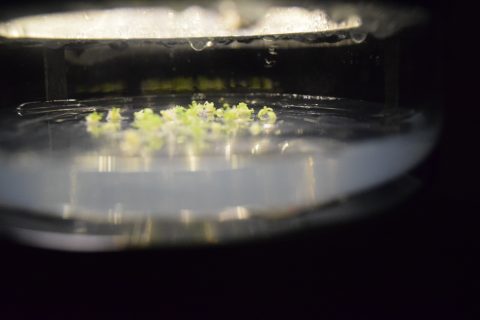
August 28 – October 24, 2016
In Ectogenesis/Phytoteratology: Plant-Human Monsters, the Slovenian biologist and new media artist Špela Petrič explores the possibility of creating human-plant hybrids.
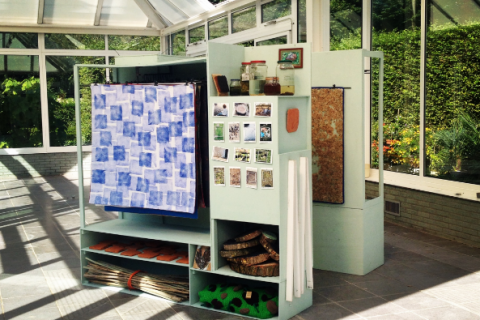
August 28 – September 25 2016
Malou van der Molen presents textile designs composed of natural elements, such as a section of water in the canal, the first day of snow, the vegetable shelf. The textile designs, nature elements and photos of the locations, are processed in an installation that covers 31 square meters displayed in the Orangerie.

May 29 – August 15 2016
Cartographies of Human Sensation presents a series of instruments that adjust the wearer to the environment through meta-sensory perceptions of bio-metric signals and radical body extensions.

May 29 – August 14 2016
Magnetoceptia is a series of performances and installations in which self made antenna-based costumes pick up electromagnetic fields and translate them into electronic sounds.
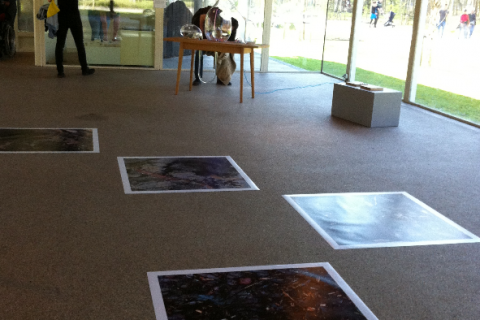
April 3 – May 15 2016
In the exhibition Air, Water, Soil the work of three artists who focus on the basic elements of life are brought in dialogue with each other.

December 13, 2015 – Februari 16, 2016,
Entropical is a research project started in 2015, the international year of the soil. This first presentation of Entropical consists of four art works in which the value and dynamics of the exchange of materials in the biological world is set against the abstract value of algorithms and computer calculations.
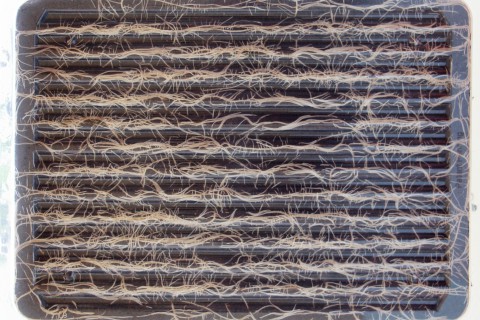
September 7 – October 11 2015
Radix Morgana is an exhibition on the study of root systems, in which the Orangerie is used as a living laboratory where plants are grown from seeds and their roots are visible for examination.
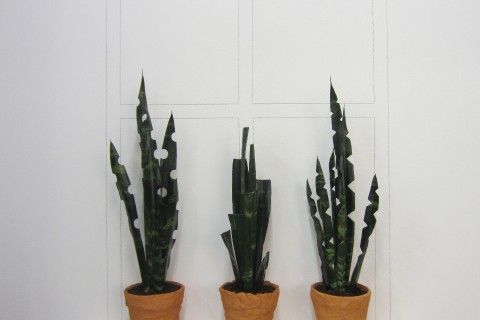
September 27 – November 30 2015
Growing Matter is an exhibition which explores work by artists who use materials in a state of growth to explore processes and relations found in nature. This exploration creates space to reflect on the creative impulse and the capacity for art to engender an intrinsic content.

In Herbarium Vivum, Driessens & Verstappen study the adaptive capacities of seven living crops under various extreme conditions

May 31 – August 23 2015
Krijn Christiaansen & Cathelijne Montens (KCCM) researched the history of the Amstelpark, that was established for a horticulture exhibition, the Floriade, in 1972. Many residues of this Floriade are, although sometimes neglected, still visible in the park. How should we deal with these residues?

May 31 – August 23 2015
Labofactory is an interdiciplinary collective that consists of scientist Jean-Marc Chomaz, architect Laurent Karst and composer Francois-Eudes Chanfraults. Together they explore the cross-overs between the imagination of art and science.
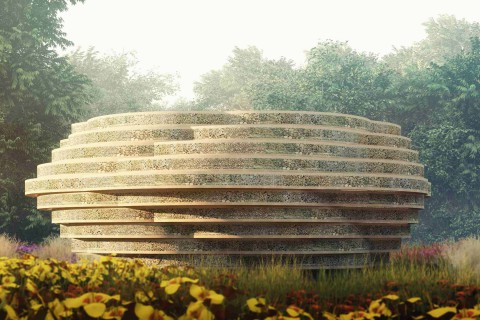
Buzzbench is a sculptural environment by AnneMarie van Splunter that can be shared by humans and insects. It is a monumental bench in the middle of a flower field that functions simultaneously as a place to sit for human beings and a biotope for insects.

March 8 – May 17, 2015
Black² is a tribute to the 100th anniversary of Malevich Black Square. The exhibition reflects on the meaning of this seminal painting for contemporary artists who deal with phenomena from the natural sciences.

December 14 2014 – 22 February 2015
The three artists embark on an exploration where science is used to decode nature and life.

September 7 – October 12 2014
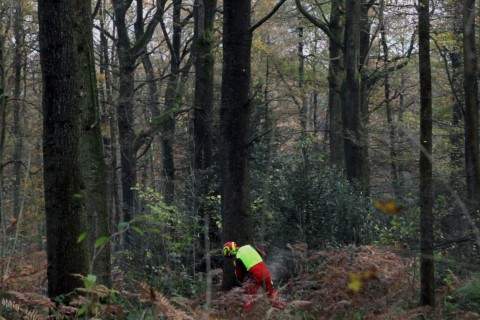
September 21 – November 30, 2014
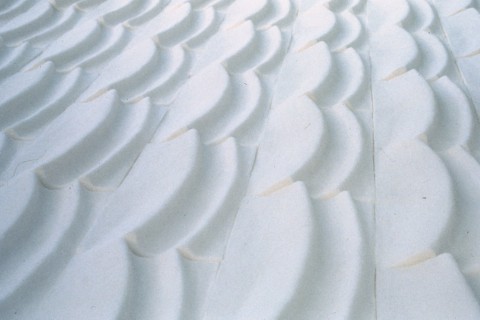
September 21 – November 30 2014
In August 2017, AnneMarie van Splunter developed a sculpture of salt in the front space of the Glazen Huis. For this work, 3000 kilos of salt will be poured using molds to form a floor work that can be overlooked as a salina, an intensely white undulating landscape of evaporated seawater.

June 21 2014
Secret Signals, an exhibition that takes place in and outside the pavilions in the Amstelpark, explores the interaction between people and their natural environment.
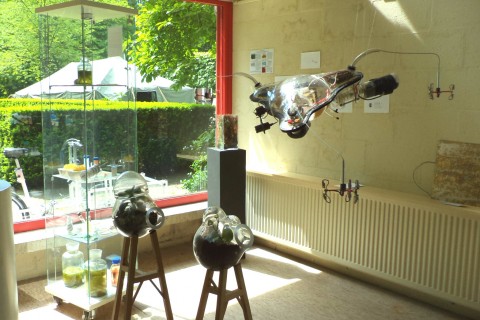
21 – 25 May 2014
The Kunstvlaai takes place in the Amstelpark from May 21 to 25, during this event Zone2Source presents its archive.
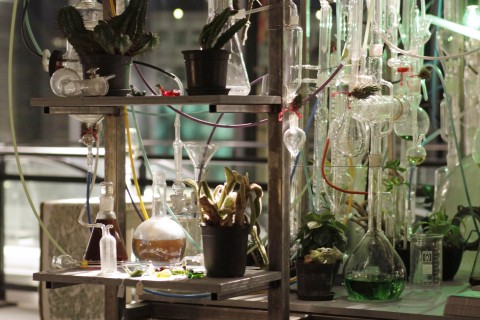
21 June – 24 Augustus 2014
Grondvormen presents a large mythical installation in which both new and previously realized laboratory installations are combined and connected to form the ultimate tea brewery. The Theemachine is an installation of plants, glass, volumes and curious objects which give the impression of a laboratory with aspects bordering on the incredible.

June 21 – August 24 2014
Inspired by the complex improvised songs of the black bird living in forests and cities all over Europe, Bird is an interactive audio-video installation in which a virtual bird, which moves in an 8 channel space, composes algorithmic songs based on recordings of black birds.
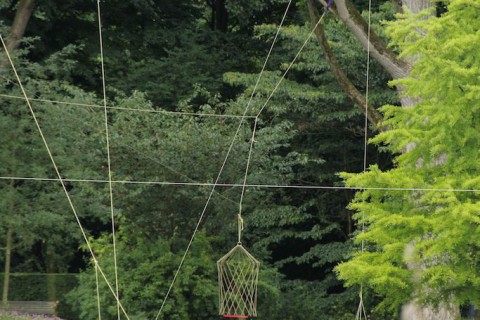
June 21 – 30 October
Chiel Kuijl designs a new work for the birds over the big pond of the Amstelpark. The installation consists of an interactive rope sculpture with swings and two pending feeding scales: some large branches and feeding bowls above the water as seats for birds and a swing on the side of the pond for people to move the installation.
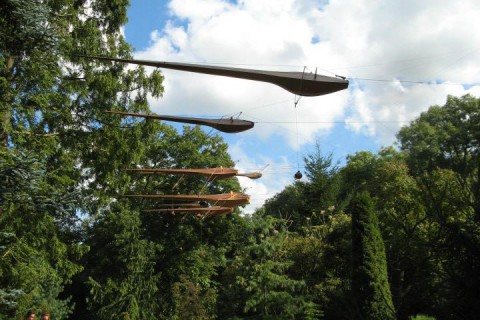
June 21 – August 24 2014
Ronald van der Meijs’ work takes place around the tension between man and machine, culture and nature. He portrays natural processes as both part and subject of the work. This installation lets technology communicate with living matter and natural elements such as water, wind, rotting fruit and evaporation.
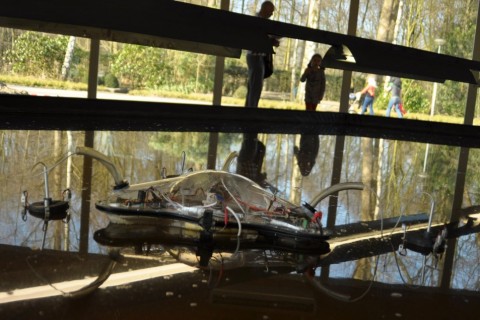
March 9– April 27 2014
Ivan Henriques developed a prototype of an autonomous photosynthetic bio-machine which will create a symbiotic system with the environment where it is located.

January 12 2014 – February 23 2014
For the Glazen Huis they created an architectural structure of “pixel pallets”, pallets that have been transformed into luminous green building blocks where all the technology is visible from outside. The design and construction process is the result of a collaboration on location in which the functions of Pixel Palace are formulated and shaped.
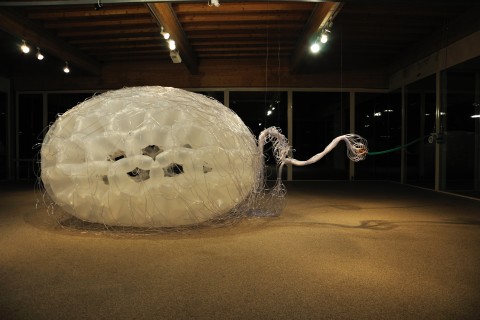
06 October – 01 December 2013
Ronald van der Meijs investigates the way in which nature and man organise themselves. A Time Capsule of Life is a hanging and moving sculpture whose structure is derived from a plant seed; a complete survival kit. The sculpture is constructed of plastic bags, a contemporary carrier of daily goods, which are connected to each other to form a transparent structure of cells and conduits.
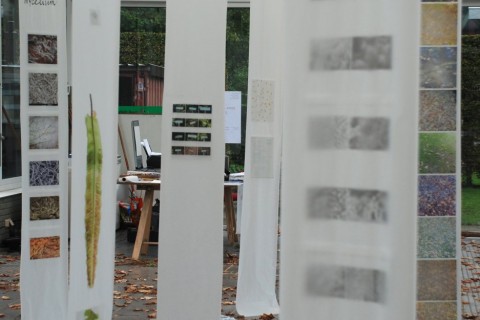
26 September – 30 December 2013
Marjolijn Boterenbrood will be working in the Amstelpark for two months, until 15 October 2013 in the Orangerie and then in the Rietveld Huis. Her research into experiences of hidden places in the park will result in the creation of an alternative map that allows visitors to experience the Amstelpark in a new way.
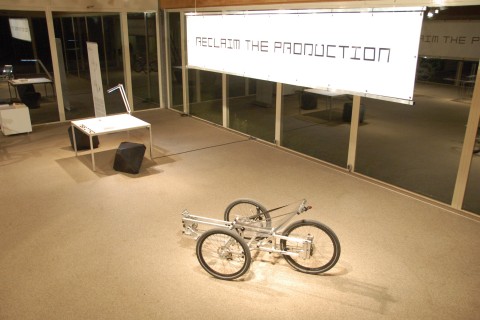
21 July – 22 September 2013
The artists collective N55 and designer Till Wolfer presents the XYZ Factory, consisting of an exhibition and workshop, in which they concern themselves with issues of reclaiming the production process and the development of non-growth economies based on eco-friendly technologies.
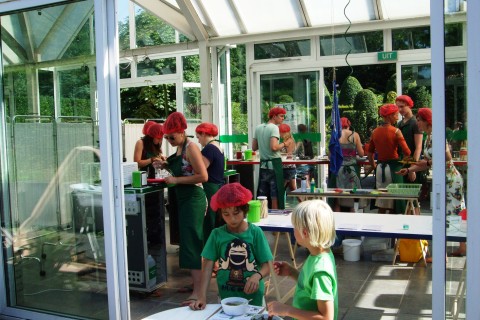
21 July – 22 September 2013
MedicineFactory is a low threshold art project in which health, responsibility, social cohesion and the care for nature and environment meet each other at the work place. It is a public accessible work place in which people are given access to the healing effects of nature and make their own medicines.
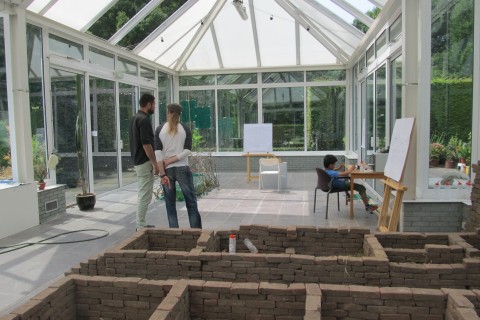
May 19 – July 14 2013
The Incredible Shrinking Man is and ongoing speculative research project into the possibility of creating a human which is more ideally suited for our earth.
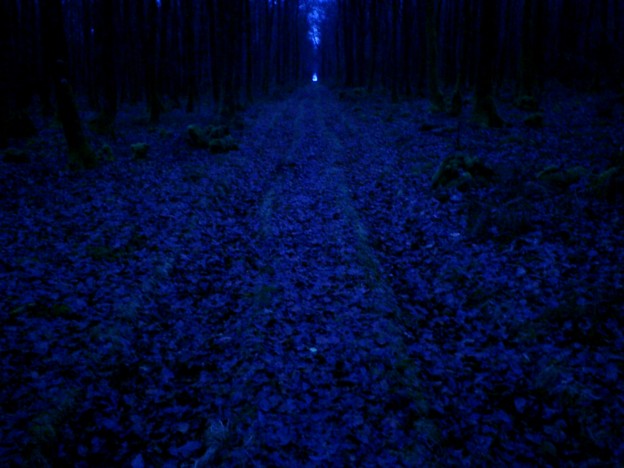
19 May – 14 July 2013
Francisco López presents Ghost Forest a site-specific compositional transposition of a multitude of original recordings, made in diverse forests all over the world, into different outdoor or indoor spaces. Dmitry Gelfand and Evelina Domnitch present Hydrogeny a water-filled chamber, strings and strata of hydrogen bubbles meticulously trace their emergent surroundings.